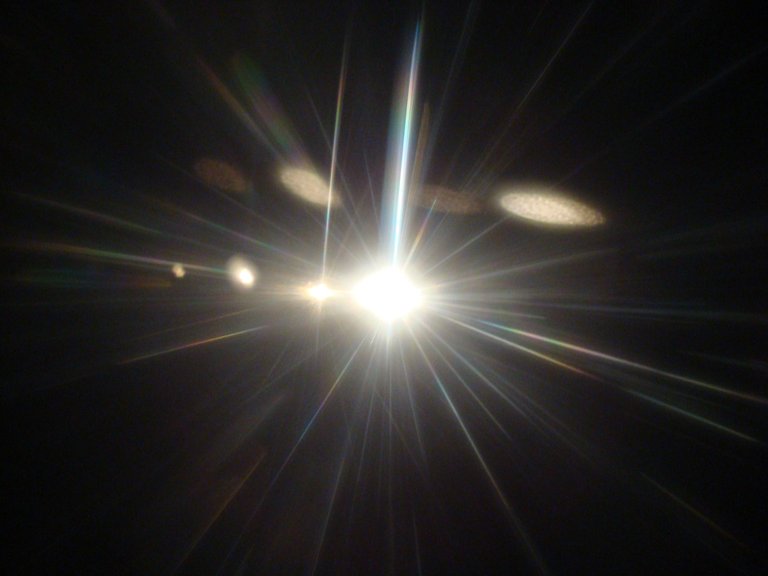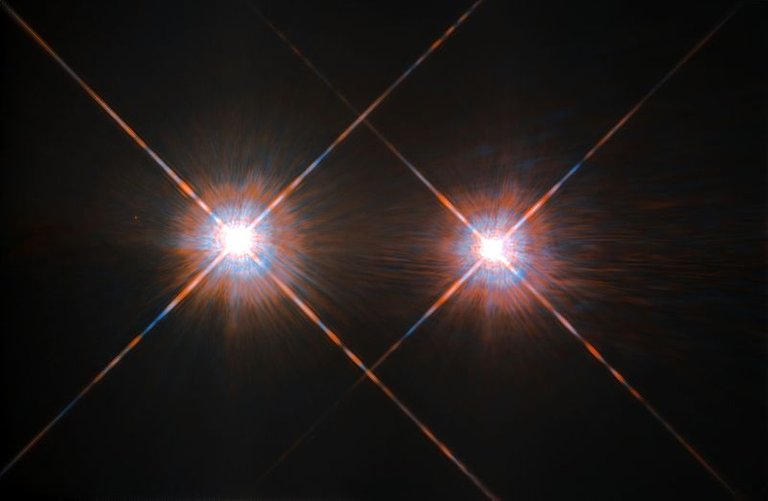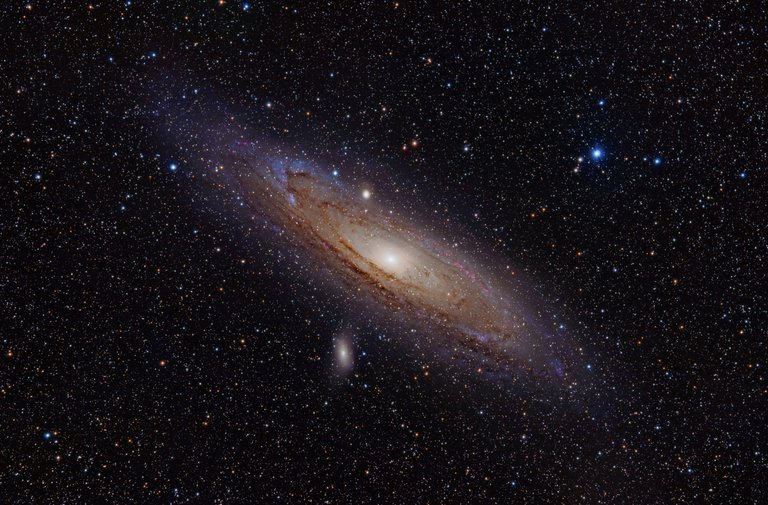Do you like to see things in the sky ?, especially at night? I'm sure we would love to see the various constellations of the stars such as Orion, Aquila, Pegasus, and others or maybe just see the beautiful moonlight at night. Whatever they are, they're just beautiful things, and I think you agree with me.
But what would you say if science revealed that the objects we see in the sky are displays from the past?
If you already know this before, maybe you are not surprised anymore, but for those of you who don't know, let's discuss it more deeply.
To see an object we need 3 components. Eyes, Object, and Light. so when we see an object, it's actually a light reflection from it. so when the reflection enters our eyes, we could see that object.
As we know that the speed of light in a vacuum is about 299792.458 km per second or 186.270 miles per second. and it makes light as the fastest thing in the universe that we've ever known.


Now let's play a little math to figure out how long it takes for an object to become visible to our eyes based on the speed of light and its distance.
How long does it take for an object that's 1000 meters away to reach our eyes?

To find out the answer, we need to divide the distance between the object and the speed of light. 1 km: 299792 km / s = 0.0000033 s, so it takes about 0.0000033 seconds for our eyes to catch an object 1000 meters away. well, it's a very fast one.
Ok, let's go further. take a look to the moon.

The distance of the moon from the earth is about 384,400 km. 384,400 km: 299792 km / s = 1.28 s, so the time it takes for the moonlight to reach our eyes is 1.28 seconds, that means we see the appearance of the moon 1.28 seconds ago.
Let's move to the sun.

By a distance of 149.6 million km, the time it takes for sunlight to reach our eyes is about 8.3 minutes. that means when we look at the sun, we actually see the view of the sun from 8.3 minutes ago.
Objects such as the moon and the sun may take only seconds and minutes to reach our eyes. but many objects light takes years to reach our eyes.
To facilitate calculations scientists use light as a unit for calculating the distance of celestial objects. which we know as units of light-years. where one light year is equal to 9,467,280,000,000 km, which is the distance that light reach in an empty space for one year. with this method, we can also easily find out how long it takes the light of celestial objects to reach our eyes.
Okay let's try it!
I'm sure you've heard of Alpha Centauri, which is a star system that is quite close and still visible for us to see with naked eyes from the earth.


The distance of the Centauri star system is about 4.3 light-years from Earth. which means the light of the stars in this system takes more than 4 years to be seen by us. and when we look at the sky and see these stars, that is 4 years ago.
Ok, let's move to further objects.
The Andromeda Galaxy, the closest galaxy from our Milky Way. which we could see with the naked eye clearly in September, October and November.


With a distance of 2,538 light-years from the earth, the light of the Andromeda galaxy takes about 2500 more years to reach our eyes. so when we see the appearance of this galaxy in the sky, that means we just see The ancient galaxy view of 2500 years ago.
So what is the current condition of the Andromeda Galaxy?
Humans will find out the answer 2500 years later...
Conclusion
Light is the fastest thing in the universe that we know so far. with a speed of 299792,458 km per second or 186,270 miles per second. scientists use light as a unit of distance to celestial objects that are very far away. By applying the speed of light to the distance of a celestial object, we could find out how long it takes light from a celestial object to reach our eyes.
The farther the object is, the longer it would take the light to reach us. and the time could be hundreds to millions of years.
Celestial objects that we could see today with a great distance from the earth is their appearance in ancient times. and it's possible that these objects already changed or even no longer exist this time.


References :
- http://content.time.com/time/subscriber/article/0,33009,931189,00.html
- https://theconversation.com/when-you-look-up-how-far-back-in-time-do-you-see-101176
- https://astronomy.stackexchange.com/questions/9990/when-we-see-the-sun-do-we-actually-see-its-past
- https://physics.stackexchange.com/questions/160283/are-we-seeing-the-past-when-we-look-at-the-stars
- https://slate.com/technology/2013/08/are-the-stars-you-see-in-the-sky-already-dead.html
- https://en.wikipedia.org/wiki/Alpha_Centauri
- https://www.forbes.com/sites/jamiecartereurope/2018/09/26/face-east-this-weekend-to-eye-the-trillion-star-andromeda-galaxy/?sh=6bca7b2e6882
This is a great article. I did know about light was how we could see but I didn't really think it was about the reflections.
It sure is interesting that the sun we see is over 8 minutes ago but I guess it definitely makes you think how far things in the sky. I really do wonder if we will develop technology that can move at the speed of light because its the fastest speed that I know about.
It's something difficult to do, Albert Einstein in the theory of relativity stated that anything that has mass cannot travel in a vacuum as fast as light. Scientists have been trying to accelerate neutrinos, the lightest particles in the universe, to exceed the speed of light but they've failed
It would be amazing that one day humans succeeded in creating technology at the speed of light, we only need 1.28 seconds to get to the moon😅
Btw, NASA has released an animated video about how to travel using technology at the speed of light, you may be interested to watch it.
Thanks for the video. It sure answers quite a bit of the questions I have. There are just too many problems that we have yet to solve.
This is an interesting write up @arnol99. It made me think how much correction and amplification needed to received the attenuated signals from the voyager. !discovery 15
Thank you @juecoree, I think it depends on the voyager's distance from the earth. Voyager 1 is the farthest at this time, it takes several hours for its signal to reach the earth. and it would increase as voyager 1 moves away.
Very interesting. I always thought that those were just ways of representing distance I didn't realize that those were the initial distance of the photon from our eyes. Nice write-up!!
Thank you @ebingo, the universe is indeed full of mystery, actually, it's hard to believe that beautiful light from celestial things in the sky are the past. but that's a fact. even scientists reveal that if there were aliens who could see the earth through their telescopes. they even would see the dinosaurs
This concept is so amazing. Thank you for sharing
You're most welcome bro..
You write fascinating articles. It's no wonder that the mars rover needs to have some level of autonomous collision avoidance. Imaging driving the rover by remote control, with a 20mins delay. I know gamers don't even like a 30ms lag between what they see on the screen and moving out of the way of a potential enemy bullet.
This post was shared and voted inside the discord by the curators team of discovery-it
Join our community! hive-193212
Discovery-it is also a Witness, vote for us here
Delegate to us for passive income. Check our 80% fee-back Program
Congratulations @arnol99! You have completed the following achievement on the Hive blockchain and have been rewarded with new badge(s) :
Your next target is to reach 900 upvotes.
Your next target is to reach 7000 upvotes.
You can view your badges on your board and compare yourself to others in the Ranking
If you no longer want to receive notifications, reply to this comment with the word
STOPSupport the HiveBuzz project. Vote for our proposal!
Thanks for your contribution to the STEMsocial community. Feel free to join us on discord to get to know the rest of us!
Please consider supporting our funding proposal, approving our witness (@stem.witness) or delegating to the @stemsocial account (for some ROI).
Thanks for including @stemsocial as a beneficiary, which gives you stronger support. Using the STEMsocial app could yield even more supporti next time.